Abstract
As a first phase in an investigation of the role of the soil microflora in Pu complex formation and solubilization in soil, the effects of Pu concentration, form, and specific activity on microbial types, colony-forming units, and CO2 evolution rate were determined in soils amended with C and N sources to optimize microbial activity. The effects of Pu differed with organism type and incubation time. After 30 days of incubation, aerobic sporeforming and anaerobic bacteria were significantly affected by soil Pu levels as low as 1 μg/g when Pu was added as the hydrolyzable 239Pu(NO3)4 (solubility, <0.1% in soil). Other classes of organisms, except the fungi, were significantly affected at soil Pu levels of 10 μg/g. Fungi were affected only at soil Pu levels of 180 μg/g. Soil CO2 evolution rate and total accumulated CO2 were affected by Pu only at the 180 μg/g level. Because of the possible role of resistant organisms in complex formation, the mechanisms of effects of Pu on the soil fungi were further evaluated. The effect of Pu on soil fungal colony-forming units was a function of Pu solubility in soil and Pu specific activity. When Pu was added in a soluble, complexed form [238Pu2(diethylenetriaminepentaacetate)3], effects occurred at Pu levels of 1 μg/g and persisted for at least 95 days. Toxicity was due primarily to radiation effects rather than to chemical effects, suggesting that, at least in the case of the fungi, formation of Pu complexes would result primarily from ligands associated with normal (in contrast to chemically-induced) biochemical pathways.
Full text
PDF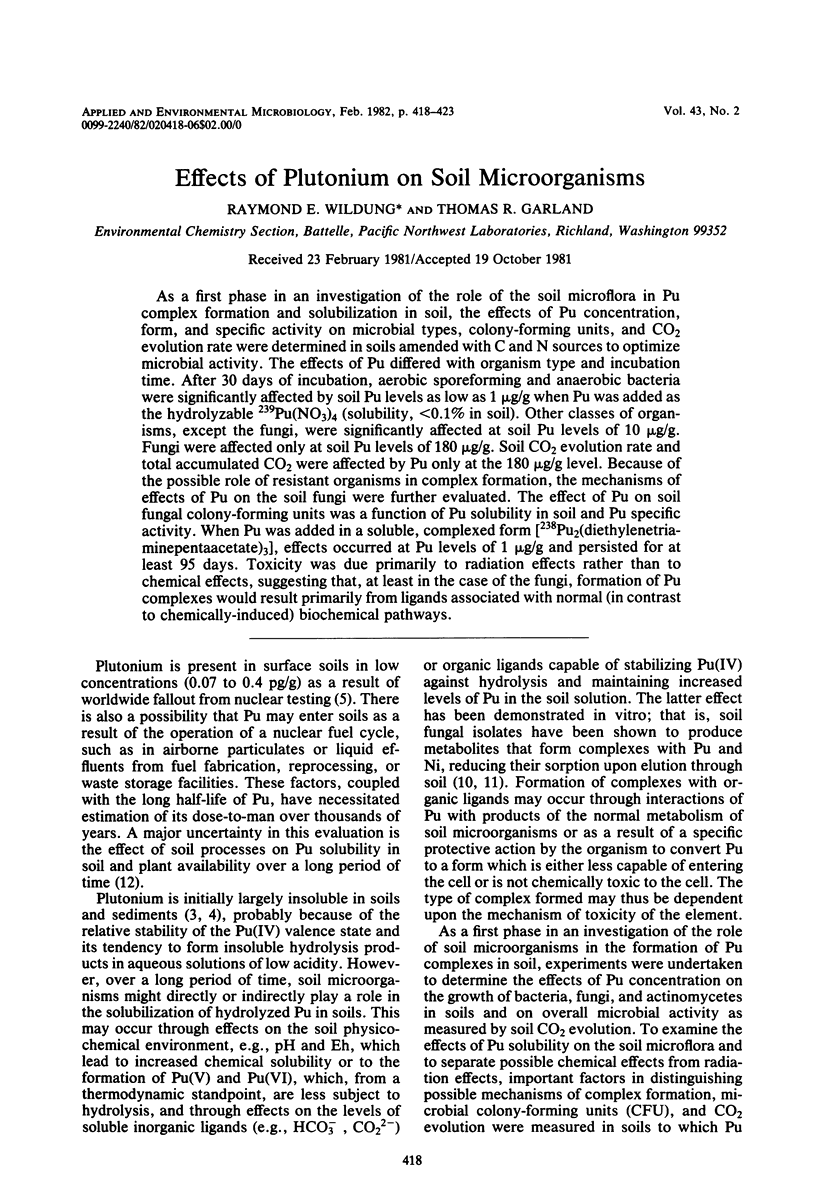
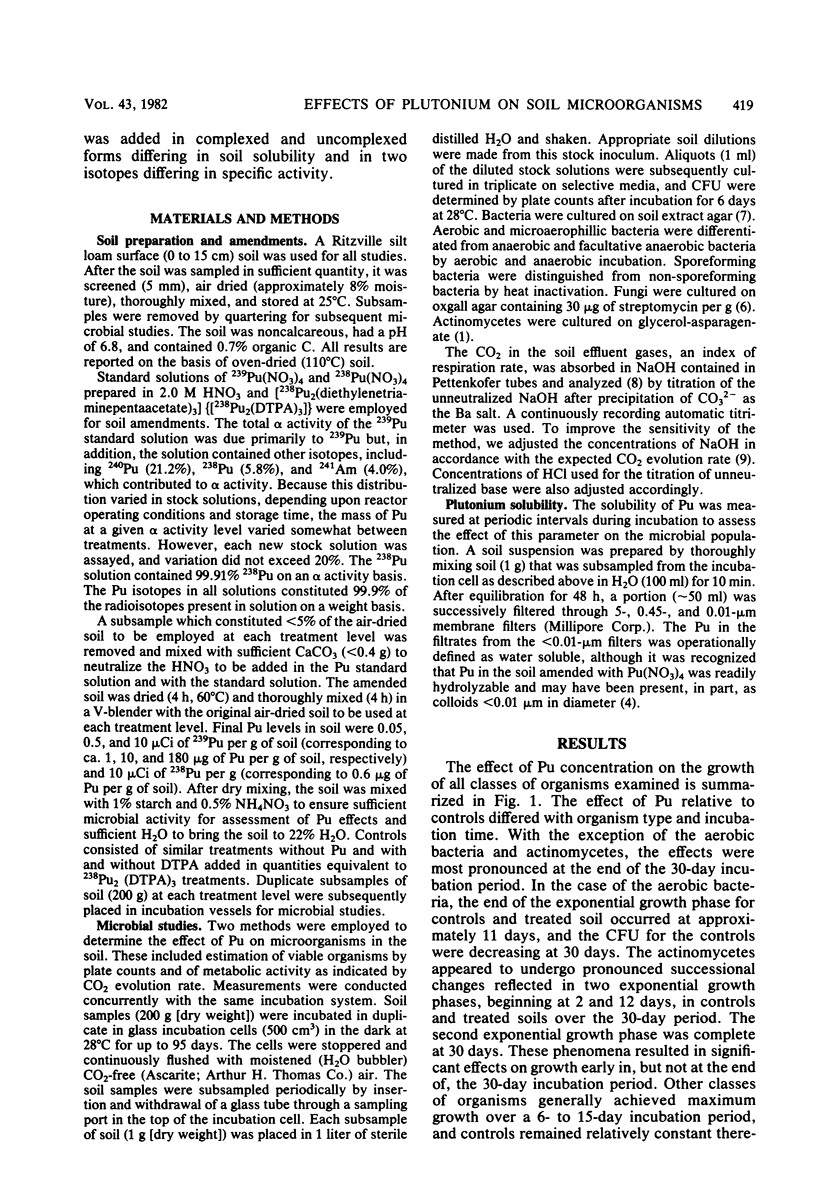
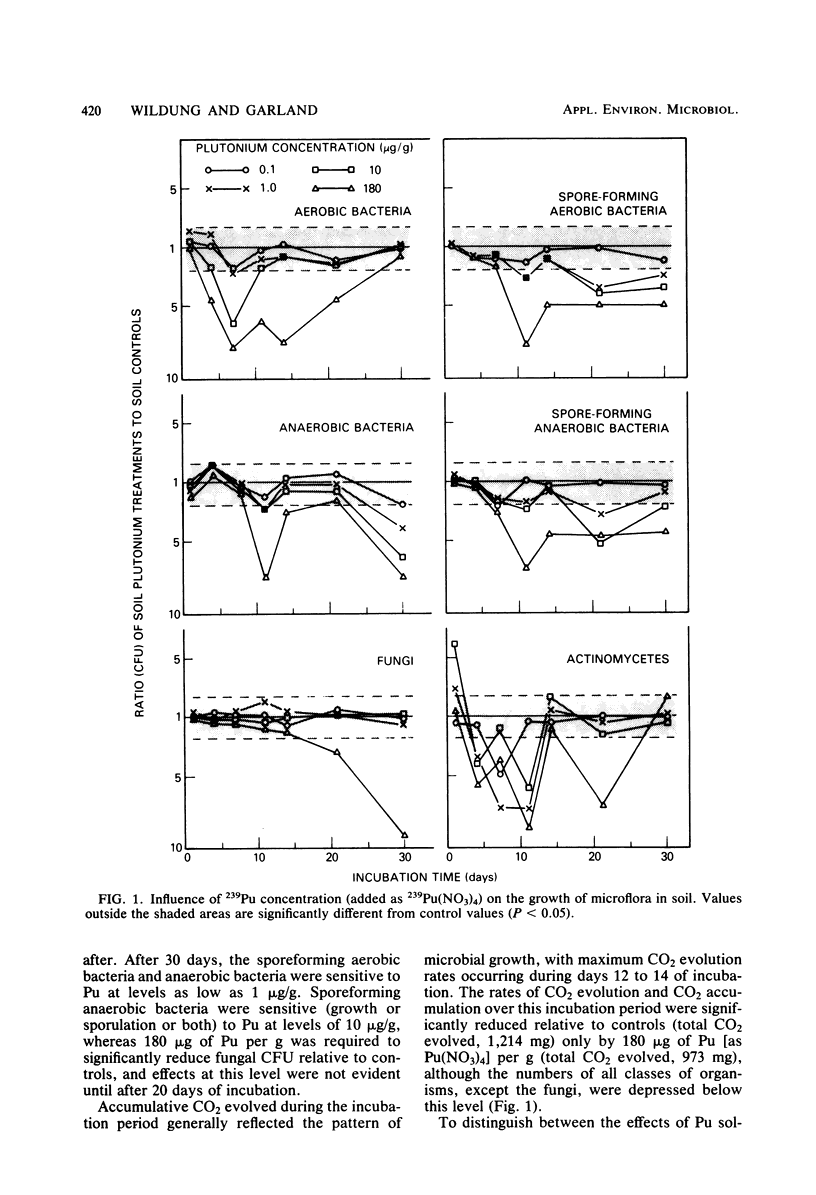
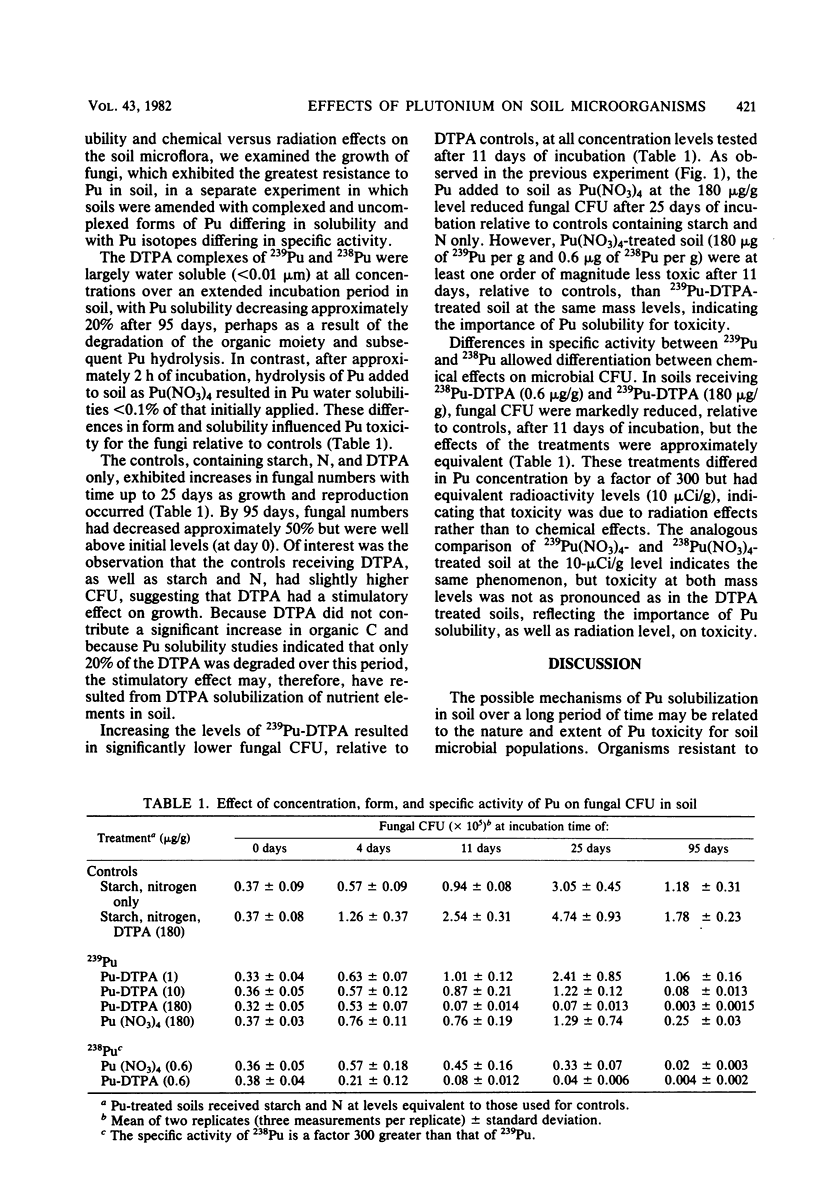
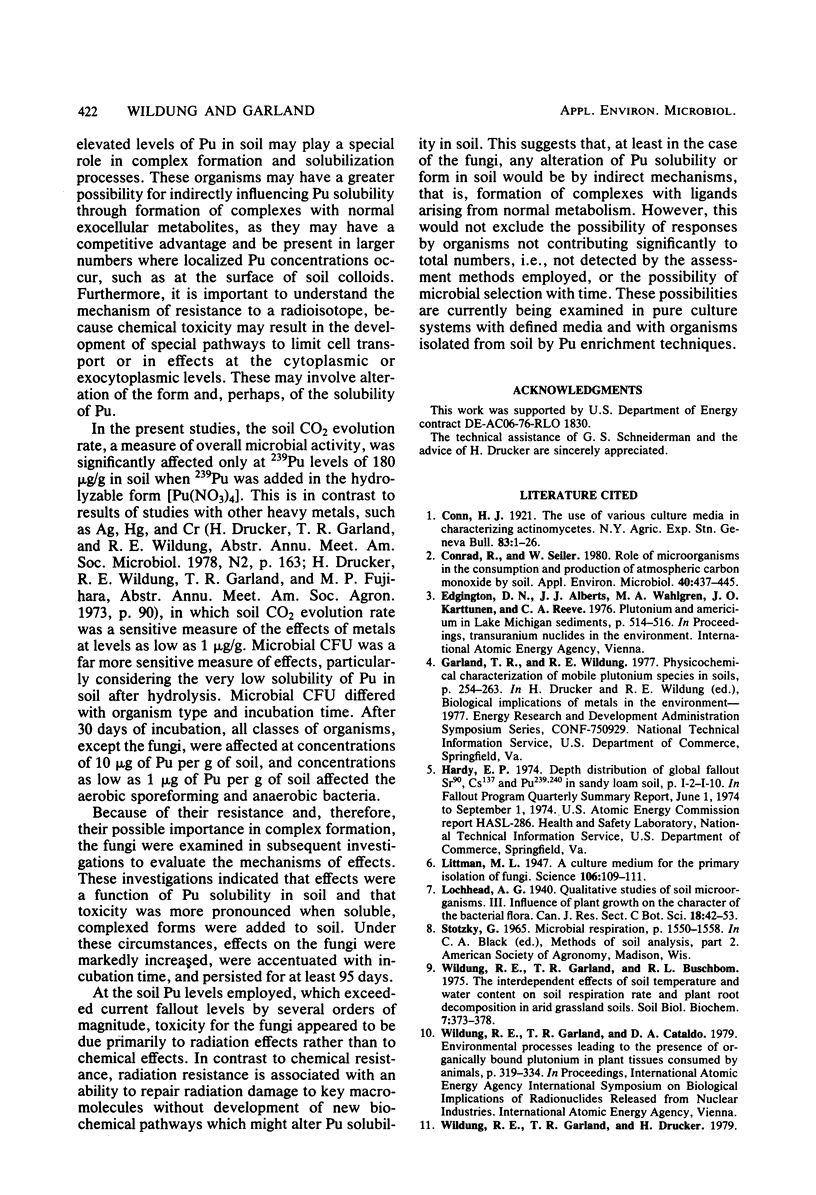
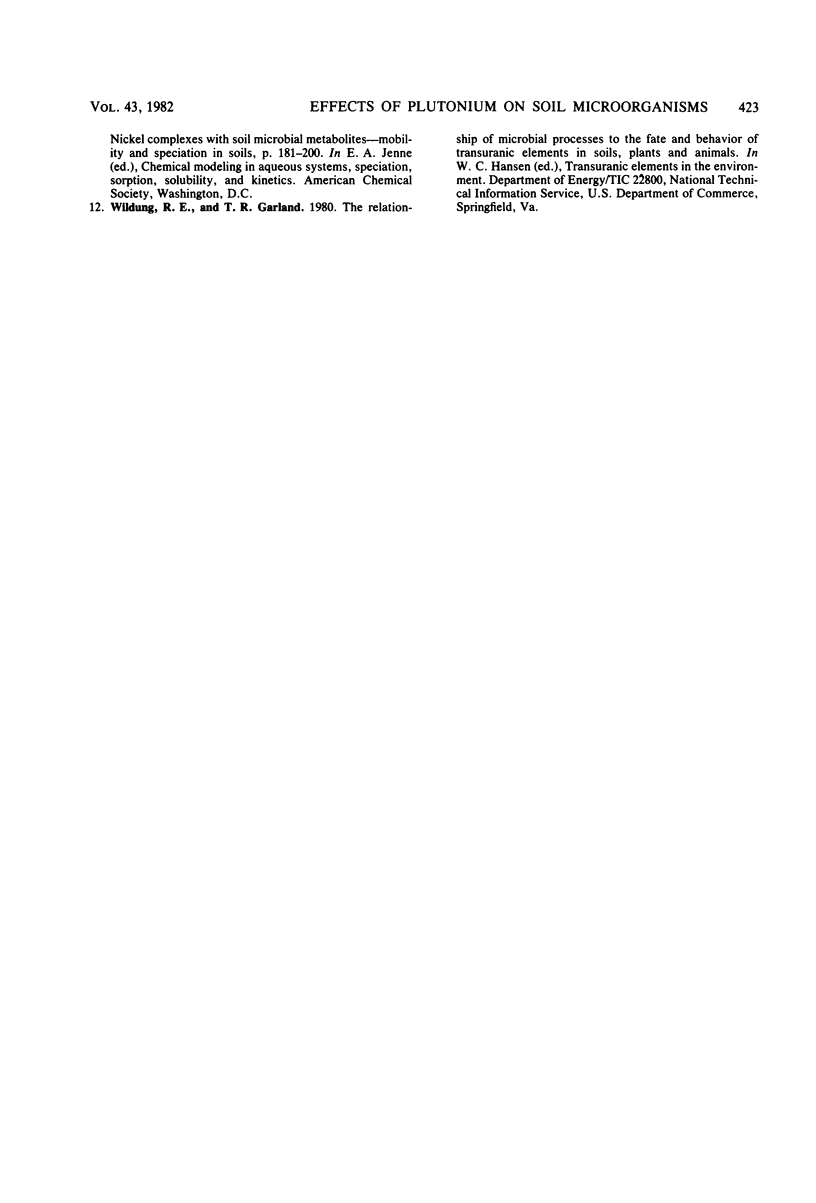
Selected References
These references are in PubMed. This may not be the complete list of references from this article.
- Conrad R., Seiler W. Role of microorganisms in the consumption and production of atmospheric carbon monoxide by soil. Appl Environ Microbiol. 1980 Sep;40(3):437–445. doi: 10.1128/aem.40.3.437-445.1980. [DOI] [PMC free article] [PubMed] [Google Scholar]
- Littman M. L. A Culture Medium for the Primary Isolation of Fungi. Science. 1947 Aug 1;106(2744):109–111. doi: 10.1126/science.106.2744.109-a. [DOI] [PubMed] [Google Scholar]


